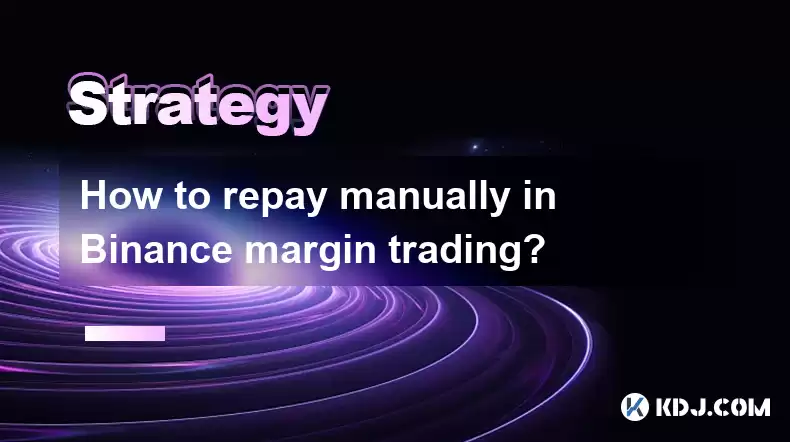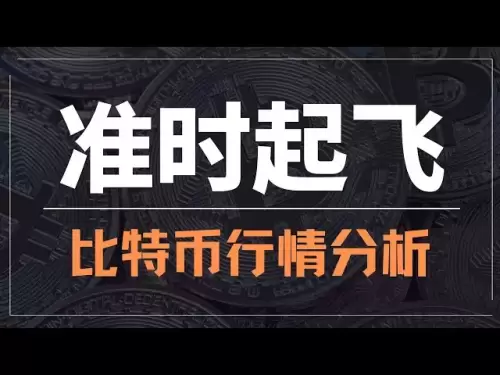-
 Bitcoin
Bitcoin $117300
1.99% -
 Ethereum
Ethereum $3884
5.89% -
 XRP
XRP $3.268
9.33% -
 Tether USDt
Tether USDt $1.000
0.02% -
 BNB
BNB $783.0
1.78% -
 Solana
Solana $173.6
3.51% -
 USDC
USDC $0.9999
0.00% -
 Dogecoin
Dogecoin $0.2193
7.00% -
 TRON
TRON $0.3380
0.30% -
 Cardano
Cardano $0.7769
5.08% -
 Stellar
Stellar $0.4350
9.36% -
 Hyperliquid
Hyperliquid $40.23
5.78% -
 Sui
Sui $3.739
6.95% -
 Chainlink
Chainlink $18.30
9.46% -
 Bitcoin Cash
Bitcoin Cash $581.7
2.11% -
 Hedera
Hedera $0.2577
5.51% -
 Ethena USDe
Ethena USDe $1.001
0.00% -
 Avalanche
Avalanche $23.08
4.23% -
 Litecoin
Litecoin $121.7
2.24% -
 UNUS SED LEO
UNUS SED LEO $8.962
-0.34% -
 Toncoin
Toncoin $3.332
1.36% -
 Shiba Inu
Shiba Inu $0.00001273
3.39% -
 Uniswap
Uniswap $10.35
6.84% -
 Polkadot
Polkadot $3.818
4.01% -
 Dai
Dai $1.000
0.01% -
 Bitget Token
Bitget Token $4.446
2.13% -
 Cronos
Cronos $0.1491
4.96% -
 Monero
Monero $255.4
-9.78% -
 Pepe
Pepe $0.00001099
4.80% -
 Aave
Aave $284.0
8.01%
How to repay manually in Binance margin trading?
Binance offers margin trading with options like cross and isolated margin; learn to manually repay borrowed funds to manage your account effectively.
Apr 06, 2025 at 02:21 am

In the world of cryptocurrency trading, Binance stands out as one of the most popular platforms, offering various trading options including margin trading. Margin trading allows users to borrow funds to leverage their trades, potentially increasing their profits. However, managing these borrowed funds effectively is crucial, and one essential skill is knowing how to repay manually in Binance margin trading. This article will guide you through the process step-by-step, ensuring you can handle your margin account with confidence.
Understanding Margin Trading on Binance
Before diving into the repayment process, it's important to understand the basics of margin trading on Binance. Margin trading involves borrowing funds to trade larger positions than your current balance would allow. Binance offers both cross margin and isolated margin trading modes. In cross margin, the entire account balance can be used as collateral, while in isolated margin, each trading pair has its own separate margin balance.
To engage in margin trading, you need to transfer funds from your spot wallet to your margin wallet. Once you have an active margin position, you may need to repay the borrowed funds, either to close a position or to reduce your debt.
Accessing the Margin Account
To start the repayment process, you first need to access your margin account on Binance. Here's how you can do it:
- Log in to your Binance account.
- Navigate to the 'Margin' section on the top menu bar.
- Select 'Cross Margin' or 'Isolated Margin' depending on the type of margin account you are using.
Once you are in the margin account section, you will see an overview of your current margin positions, including the borrowed amounts and the interest accrued.
Initiating the Repayment Process
To manually repay your borrowed funds, follow these steps:
- Click on the 'Repay' button next to the asset you want to repay. This button is usually located in the 'Borrowed' section of your margin account.
- Select the asset you want to repay. Make sure you choose the correct asset as you cannot repay one asset with another.
- Enter the amount you wish to repay. You can choose to repay the full amount or a partial amount. If you want to repay the full amount, you can click on the 'Max' button to automatically fill in the total borrowed amount.
Confirming the Repayment
After entering the repayment amount, you need to confirm the transaction:
- Review the repayment details carefully, including the asset, amount, and any associated fees.
- Click on the 'Confirm' button to proceed with the repayment.
- Enter your 2FA code if you have two-factor authentication enabled on your account. This adds an extra layer of security to your transactions.
Once you confirm the repayment, the funds will be transferred from your margin wallet to the lender, reducing your borrowed amount and any associated interest.
Checking the Repayment Status
After initiating the repayment, it's important to check the status to ensure the transaction was successful:
- Go back to the 'Margin' section and check the 'Borrowed' section again.
- Verify that the borrowed amount has decreased by the amount you repaid.
- Check your margin wallet balance to ensure the funds have been deducted correctly.
If everything looks correct, your repayment has been successfully processed. If you encounter any issues, you can contact Binance customer support for assistance.
Managing Multiple Repayments
If you have borrowed multiple assets or have multiple margin positions, you may need to manage multiple repayments. Here's how you can handle this:
- Repeat the repayment process for each asset you need to repay.
- Prioritize repayments based on interest rates or your trading strategy. Assets with higher interest rates might be more urgent to repay.
- Keep track of your repayments using the transaction history in your margin account. This will help you monitor your overall debt and repayment progress.
By following these steps, you can effectively manage your margin account and ensure timely repayments, reducing your risk and maintaining a healthy trading balance.
Frequently Asked Questions
Q: Can I repay my margin loan with a different cryptocurrency than what I borrowed?
A: No, you must repay your margin loan with the same cryptocurrency that you borrowed. Binance does not allow cross-asset repayment in margin trading.
Q: What happens if I fail to repay my margin loan on time?
A: If you fail to repay your margin loan on time, you may incur additional interest charges. In severe cases, if your account falls below the maintenance margin level, your positions may be liquidated to cover the debt.
Q: Can I automate the repayment process on Binance?
A: Currently, Binance does not offer an automated repayment feature for margin trading. All repayments must be done manually through the steps outlined in this article.
Q: Is there a minimum amount I need to repay when using the manual repayment option?
A: There is no minimum repayment amount specified by Binance for manual repayments. You can repay any amount you choose, as long as it does not exceed the total borrowed amount.
Disclaimer:info@kdj.com
The information provided is not trading advice. kdj.com does not assume any responsibility for any investments made based on the information provided in this article. Cryptocurrencies are highly volatile and it is highly recommended that you invest with caution after thorough research!
If you believe that the content used on this website infringes your copyright, please contact us immediately (info@kdj.com) and we will delete it promptly.
- Cold Wallet Crypto in 2025: The Future is Now, Ya'll
- 2025-08-08 05:10:13
- MAGACOIN, SOL, and ADA: A Tale of Shifting Tides in Crypto
- 2025-08-08 05:10:13
- SHIB Price, PEPE, and the Memecoin Supercycle: Who Will Reign Supreme?
- 2025-08-08 05:50:12
- Pudgy Penguins Price Prediction: Google Trends & Breakout Signals
- 2025-08-08 05:50:12
- UAE Crypto Regulation: SCA and VARA Unite to Streamline the Future of Digital Assets
- 2025-08-08 05:55:48
- MAGACOIN Finance: The Presale Phenomenon Rocking the Crypto World
- 2025-08-08 05:55:48
Related knowledge

How to avoid common crypto investment mistakes?
Jul 13,2025 at 01:35am
Understanding the Risks of Crypto InvestmentInvesting in cryptocurrency can be highly rewarding, but it also comes with significant risks. One of the ...

What is a long-short crypto strategy?
Jul 15,2025 at 10:56am
Understanding the Basics of a Long-Short Crypto StrategyA long-short crypto strategy is an investment approach where traders simultaneously take long ...

What is a long-short crypto strategy?
Jul 11,2025 at 01:28pm
Understanding the Basics of Long-Short Crypto StrategyA long-short crypto strategy is an investment approach where traders take both long and short po...

How to use the RSI indicator for crypto?
Jul 12,2025 at 03:56pm
Understanding the RSI Indicator in Cryptocurrency TradingThe Relative Strength Index (RSI) is a momentum oscillator used to measure the speed and chan...

Is copy trading a good strategy for crypto beginners?
Jul 12,2025 at 08:28am
Understanding Copy Trading in the Cryptocurrency MarketCopy trading is a strategy where novice traders replicate the trades of experienced investors a...

How to build a crypto portfolio with $1000?
Jul 13,2025 at 08:14pm
Understanding the Basics of Cryptocurrency InvestmentBuilding a crypto portfolio with $1000 starts with understanding the fundamentals of cryptocurren...

How to avoid common crypto investment mistakes?
Jul 13,2025 at 01:35am
Understanding the Risks of Crypto InvestmentInvesting in cryptocurrency can be highly rewarding, but it also comes with significant risks. One of the ...

What is a long-short crypto strategy?
Jul 15,2025 at 10:56am
Understanding the Basics of a Long-Short Crypto StrategyA long-short crypto strategy is an investment approach where traders simultaneously take long ...

What is a long-short crypto strategy?
Jul 11,2025 at 01:28pm
Understanding the Basics of Long-Short Crypto StrategyA long-short crypto strategy is an investment approach where traders take both long and short po...

How to use the RSI indicator for crypto?
Jul 12,2025 at 03:56pm
Understanding the RSI Indicator in Cryptocurrency TradingThe Relative Strength Index (RSI) is a momentum oscillator used to measure the speed and chan...

Is copy trading a good strategy for crypto beginners?
Jul 12,2025 at 08:28am
Understanding Copy Trading in the Cryptocurrency MarketCopy trading is a strategy where novice traders replicate the trades of experienced investors a...

How to build a crypto portfolio with $1000?
Jul 13,2025 at 08:14pm
Understanding the Basics of Cryptocurrency InvestmentBuilding a crypto portfolio with $1000 starts with understanding the fundamentals of cryptocurren...
See all articles

























































































